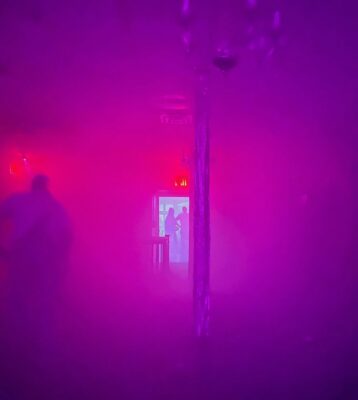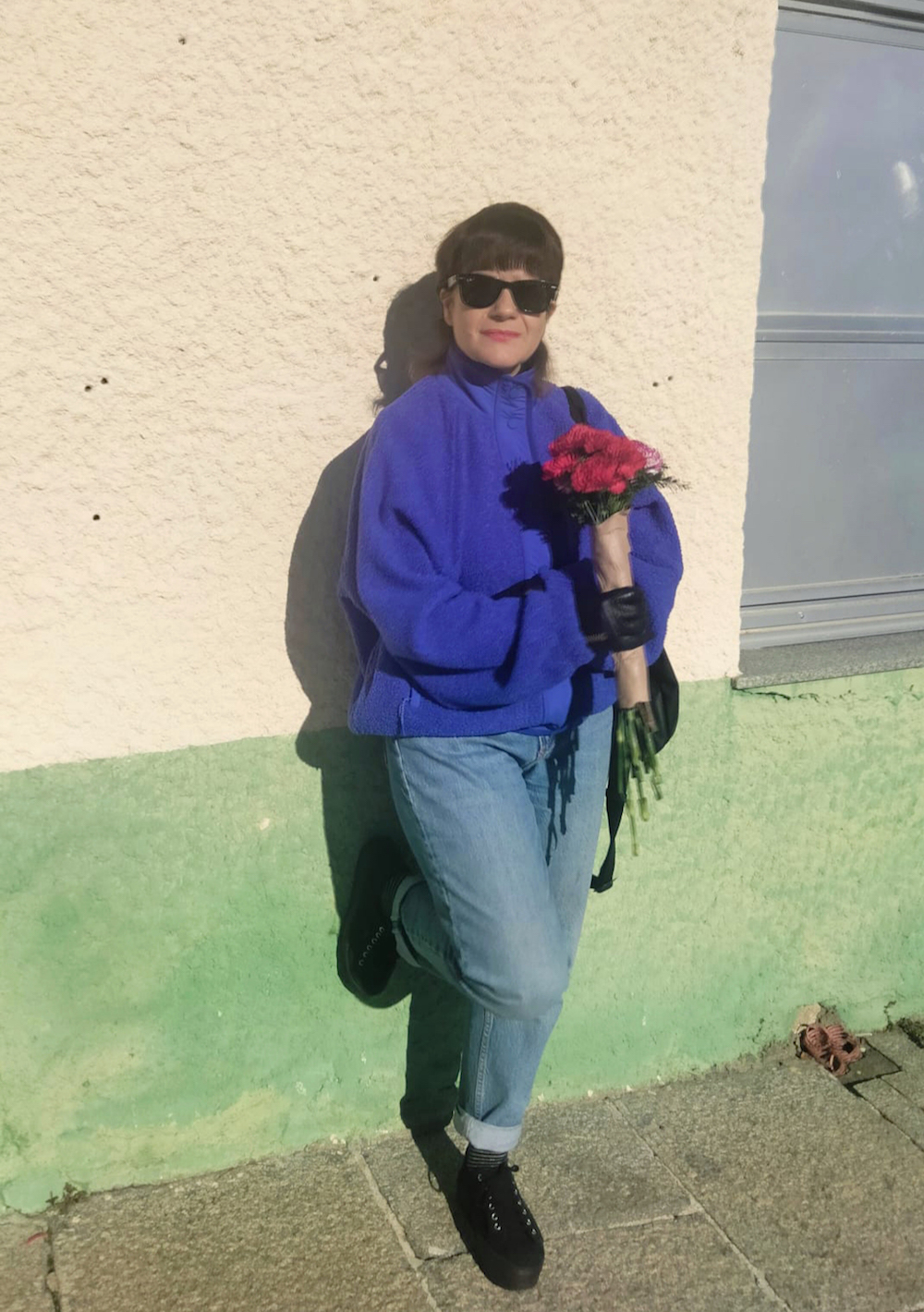Search
To search for an exact match, type the word or phrase you want in quotation marks.
A*DESK has been offering since 2002 contents about criticism and contemporary art. A*DESK has become consolidated thanks to all those who have believed in the project, all those who have followed us, debating, participating and collaborating. Many people have collaborated with A*DESK, and continue to do so. Their efforts, knowledge and belief in the project are what make it grow internationally. At A*DESK we have also generated work for over one hundred professionals in culture, from small collaborations with reviews and classes, to more prolonged and intense collaborations.
At A*DESK we believe in the need for free and universal access to culture and knowledge. We want to carry on being independent, remaining open to more ideas and opinions. If you believe in A*DESK, we need your backing to be able to continue. You can now participate in the project by supporting it. You can choose how much you want to contribute to the project.
You can decide how much you want to bring to the project.

At the end of 2023, the Argentine publishing house Caja Negra [1]Established in Argentina in 2005 by Diego Esteras and Ezequiel Fanego, Caja Negra is an independent publisher with offices in Buenos Aires and Madrid., specialized in current affairs, art and contemporary thought, shared with me two of the latest publications, translated into Spanish, of interesting books. One was No Binarix [2]No Binarix is a memoir written by Genesis P-Orridge shortly before dying from leukemia in 2020. Orridge was part of the extreme performance art group COUM Transmissions, the industrial bands … Continue reading the memoirs of Genesis P-Orridge, and the other, which I will focus on today, was RAVING by Mckenzie Wark [3]Mackenzie Wark, New Castle, 1961, is an Australian writer and teacher based in New York. She is primarily known for her writings on media theory, critical theory, new media and the Situationist … Continue reading Both are wonderful and highly recommended and both are in the bibliography of my thesis that one day I will finish but which meanwhile helps me find and enjoy new books and teachings. Now that I have one foot in the Academy, I respect and admire those who within such a hierarchy further the revolution and who are radical in their research and teaching. McKenzie Wark presents herself as an “icon of theory, bad Marxist and transsexual threat,” and with these labels she teaches classes in Cultural Studies and Media at Lang College of the New School for Social Research in New York. I searched on Google Maps for the location of the school (what fantastic higher education they have in the United States) and found that it is located in Greenwich Village on the populous island of Manhattan, approximately 2 hours and 30 minutes walking and 50 minutes by car from the neighborhood of Bushwick, Brooklyn, where her book RAVING takes place. The book is an autofiction that has had great success, just like her previous publication Reverse Cowgirl, where she delved into the connections between transitioning and going out to raves. In a recent interview, Wark had this to say: “I started going to raves again after transitioning because I still had very a diffuse dysphoria, which wasn’t located in any specific part of my body. That’s why I didn’t consider resorting to surgery. I could have surgery on my face or boobs, but it wouldn’t make me feel better. It works for other people, but what helps me is dancing.” An interesting concept that she reflects on through these books is about continuing to focus, after more than thirty years of electronic music, on techno, the beat that never dies. Techno has a kind of oblique time that is tied to the sense of experimentation that comes with being trans, “because many trans people don’t expect to live a long time, and this gives you a very different perception of temporality,” as she says. Post-pandemic time is another way to understand the book and re-embrace gatherings and dancing just as Wark’s generation did in the 90s. For the trans and trans-friendly community of Brooklyn, the old industrial warehouses with “alien ligh,t” gentrified for parties and nighttime cultures, act as a shelter, “a refuge in which to dance and improvise, even when everything around us conspires against any positive image of the future.” Electronic music is also as a safe space for others genders.Ketamine femunnism [4]Ketamine femunnism is a neologism referring to both communism and the French term femme which in English evokes what is most conventionally treated as feminine but which has been repoliticized in the … Continue reading, tiempo-k [5]K-time is what the constructed situation of a rave seeks to generate. The k- refers to one of the most consumed drugs in these raves, ketamine., Rave continuum refers to a rave with a time that exists outside of all time and which goes beyond traditional linear and historical time.[/n] are some of the concepts produced in dialogue with anonymous friends, occasional lovers, DJs, night workers, and a heterogeneous list of references that goes from Theodor Adorno to Juliana Huxtable [6]Juliana Huxtable, Houston, 1987, is a visual artist, writer, performer, DJ, and co-founder of the Shock Value project, based in New York., including the Situationists and Facebook memes. The social criticism that derives from gentrification and world globalization runs through part of this story, focusing on those co-worker [7] Co-worker is a social type cataloged by ravers to influence a person who is usually a non-raver. cis men who go to these parties with the intention of being “contemporary” and who are supposedly tolerant of minorities and diversity. It is contradictory and somewhat perverse when the heteropatriarchy goes out to party and appropriates codes in a kind of false social integration. The important thing is to continue building a gender-friendly us. It is about understanding music as salvation. “The fragment, on loop in my head, is the soundtrack of our hug.” This is how Mackenzie Wark’s book ends, though not the Spanish edition of Caja Negra, in which the cultural researcher and philosopher Marta Echaves adds an epilogue. Marta finds herself in a nocturnal and literary fantasy with Wark herself, with Mark Fisher [8]Mark Fisher Leicester, 1968-2017, was a British writer, teacher and cultural critic. He gained popularity for his k-punk blog posts in the early 21st century about radical politics, music, and pop … Continue reading,in a desire for deconstruction and to convert it into femunnism and an endless rave continuum.
[Featured Image: Photo @Mackenzie Wark @ The New Yorker 2023].
| ↑1 | Established in Argentina in 2005 by Diego Esteras and Ezequiel Fanego, Caja Negra is an independent publisher with offices in Buenos Aires and Madrid. |
|---|---|
| ↑2 | No Binarix is a memoir written by Genesis P-Orridge shortly before dying from leukemia in 2020. Orridge was part of the extreme performance art group COUM Transmissions, the industrial bands Throbbing Gristle and Psychic TV, and the esoteric-community adventure known as The Temple of Psychic Youth. |
| ↑3 | Mackenzie Wark, New Castle, 1961, is an Australian writer and teacher based in New York. She is primarily known for her writings on media theory, critical theory, new media and the Situationist International. |
| ↑4 | Ketamine femunnism is a neologism referring to both communism and the French term femme which in English evokes what is most conventionally treated as feminine but which has been repoliticized in the queer and trans communities. |
| ↑5 | K-time is what the constructed situation of a rave seeks to generate. The k- refers to one of the most consumed drugs in these raves, ketamine. |
| ↑6 | Juliana Huxtable, Houston, 1987, is a visual artist, writer, performer, DJ, and co-founder of the Shock Value project, based in New York. |
| ↑7 | Co-worker is a social type cataloged by ravers to influence a person who is usually a non-raver. |
| ↑8 | Mark Fisher Leicester, 1968-2017, was a British writer, teacher and cultural critic. He gained popularity for his k-punk blog posts in the early 21st century about radical politics, music, and pop culture. |

Natalia Piñuel Martín is an art historian, cultural researcher and curator. Co-founder of the Playtime Audiovisuales platform based in Madrid since 2007 from where they develop projects for museums and cultural spaces such as MUSAC (León), DA2 (Salamanca), Espacio Fundación Telefónica and Museo Centro de Arte 2 de Mayo (Madrid), AECID or the Cervantes Institute. She has been programming music & activities for the She Makes Noise Festival at La Casa Encendida since 2015. She writes regularly in the media and gives classes and talks on contemporary artistic practices and gender issues. She has curated exhibitions for the MEIAC (Badajoz) and audiovisual and performance cycles for the Women’s Institute and the Her Festival. She currently directs and hosts the Derivas podcast. She is in her second year as a doctoral student at USAL. Photo: Enrique Piñuel.
"A desk is a dangerous place from which to watch the world" (John Le Carré)